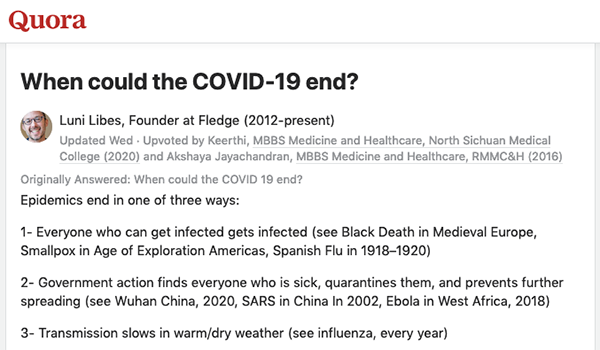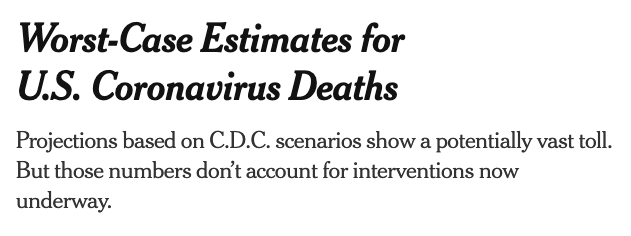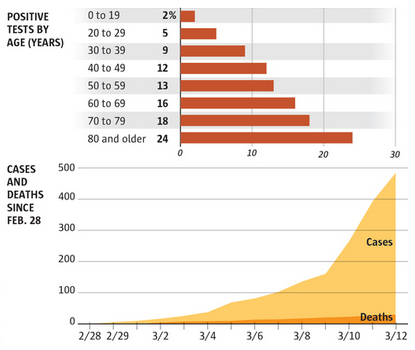
Some of the best aphorisms are misquotes of misquotes, but end up popular because they are honed down to as few simple words as can be. One such aphorism seems fitting in this moment in time, or at least a variation on the theme.
It Always Seems Impossible Until It’s Done.
Nelson Mandela, sort of, see quoteinvestigator.com/2016/01/05/done
Three months ago, a global pandemic was “impossible”. It was considered a scare tactic by politicians and others who don’t read history, who dismiss science, and who don’t understand statistics. The impossible of yesterday is the front page news story of today.
Friday, March 13th. Italy is closed. Parts of Spain are closed. New Rochelle, NY is closed. Multiple states have declared emergencies. Schools are closed in more than a half dozen U.S. states. Europeans are no longer allowed to enter the United States. The President this morning declared a National Emergency. And let’s not forget, a day or two ago the WHO announced there is a global pandemic.
Now that all but the most ignorant people believe this is real and serious, what comes next? Over on Quora earlier in the week I answered the question “When does the COVID-19 end?.
What does the end look like? Today the CDC reported four potential scenarios for the epidemic in the U.S.:
Between 160 million and 214 million people in the U.S. could be infected over the course of the epidemic, according to one projection. That could last months or even over a year, with infections concentrated in shorter periods, staggered across time in different communities, experts said. As many as 200,000 to 1.7 million people could die.
CDC, March 13, 2020
It’s too soon to try and do the same projections globally. Big, scary numbers are no longer impossible. They will happen.
Meanwhile, the other big question is “What do we surely know?“. I answered that question over on Quora too.
Some local statistics to add to what we know. Ignore the number of cases. We know there is vastly insufficient testing in the whole U.S. Instead, trust that every critically ill person has been tested, and thus the reported mortality rate of over 5% is currently accurate. That is bad, but it is dropping as more cases are found.
Lastly, note how age and infection rate are highly correlated. This isn’t what influenza looks like. That disease infects both the young and the old. The only (relatively) safe age range seems to be under 20, but the evidence is mounting that the young do catch this disease and to spread it to others, they just don’t show any symptoms.
For the best daily update on the pandemic, subscribe to Dr. John’s Campbell’s YouTube channel:
More in this series:
Post #1: The 2020 Epidemic: Coronavirus
Post #2: Seattle, we have a (Covid-19) Problem
Post #3: Just Three (Viral) Weeks Ago
Post #4: Isolated in Seattle
Post #5: Impossible Until it Happens
Post #6: What a mild (and moderate) case of Covid-19 feels like
The rest in #Pandemic

















